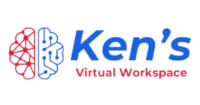outright purchase, asset financing, leasing
When it comes to acquiring new ICT equipment, such as a laptop, businesses and individuals often face the decision of how to finance the purchase. The three primary options are outright purchase, asset financing, and leasing. Each method has its own advantages and disadvantages, and understanding the total cost of ownership (TCO) is crucial in making an informed decision.
- Outright Purchase
The most straightforward option is to purchase the equipment outright using cash or a personal loan. This provides full ownership and control over the asset. However, it requires a significant upfront investment, which may not be feasible for everyone.
- Asset Financing
Another option is to obtain a bank loan to finance the purchase. This allows you to spread out the cost over time through regular payments. However, interest rates can be high, and there may be additional fees and charges associated with the loan.
- Leasing
Leasing involves renting the equipment for a specified period, typically with monthly payments. At the end of the lease term, you can return the equipment or purchase it at a predetermined residual value. Leasing can offer several advantages, including lower upfront costs, flexibility, and potential tax benefits. A lease is a contractual agreement between a lessor (the legal owner of the asset) and a lessee (the person who wants to use the asset) that grants the lessee the right to use the asset for a specific term in return for regular rental payments. While often associated with living spaces, working spaces, and cars, leasing can apply to a wide range of assets, including storage, conveyor belts, lighting, furnishings, software, server hardware, aircraft, cleaning equipment, and more.
Rent vs. Lease
While often used interchangeably, “lease” and “rent” have distinct meanings. A lease refers to the contractual agreement itself, while rent refers to the periodic payment for the use of the asset. Neither leasing nor renting grants ownership of the asset.
Residual Value
Residual value, also known as salvage value, is an estimate of an asset’s worth at the end of its lease. It’s commonly associated with car leasing but can apply to any leased asset that depreciates and can be resold. Residual value generally decreases with longer lease terms, except for real estate assets, which may appreciate.
The Benefits of Leasing
- Leasing offers several advantages for businesses and individuals:
- Lower Upfront Costs: Leases require smaller initial payments compared to outright purchases.
- Flexibility: Leases allow for easier upgrades and returns at the end of the term.
- Tax Benefits: Lease payments can be tax-deductible as operating expenses.
- Improved Cash Flow: Leasing can help manage cash flow by spreading out payments over time
A Case Study: The Acer TravelMate P4 Laptop
To illustrate the TCO of each financing method, let’s consider the example of an Acer TravelMate P4 laptop, priced at $1,040. Assuming a three-year lease term, a 16.84% interest rate, and other relevant factors, we can calculate the TCO for each option:
• Outright Purchase: Total TCO over 36 months: $2,139.18
• Asset Financing: Total TCO over 36 months: $2,632.28 (including depreciation benefit)
• Leasing: Total TCO over 36 months: $1,281.12
Detailed Calculations for the TCO Comparison
Assumptions:
- Laptop Cost: $1,040
- Residual Value (Leasing): 20% of original cost ($1,040) = $208
- Interest Rate (Bank Loan): 16.84%
- Comprehensive Warranty (Lease): $45/year
- Insurance (All Options): 1% of purchase price per year
- Depreciation (Outright Purchase): 33.33% per year
- Maintenance (Outright Purchase): 15% of purchase price in year 2, 20% increase in year 3
- UEM & Track & Trace: $51/year (all options)
Outright Purchase
Year 1
- Purchase Price: $1,040
- Insurance: $10.40
- UEM & Track & Trace: $51.00
- Total Year 1 Cost: $1,101.40
Year 2
- Depreciation: $346.67
- Maintenance: $156.00
- Insurance: $10.40
- UEM & Track & Trace: $51.00
- Total Year 2 Cost: $558.07
Year 3
- Depreciation: $231.11
- Maintenance: $187.20
- Insurance: $10.40
- UEM & Track & Trace: $51.00
- Total Year 3 Cost: $479.71
Total Outright Purchase TCO (3 years): $2,139.18
Asset Financing (Bank Loan)
Loan amount: Assuming down payment doesn’t exist, this equals the purchase price.
- Loan amount: $1,040
Year 1
- Loan Payment: $459.24
- Other Loan Charges: $59.28
- Insurance: $10.40
- UEM & Track & Trace: $51.00
- Depreciation: $346.67
- Maintenance: $0 (assuming warranty covers year 1)
- Total Year 1 Cost: $1,026.69
Year 2
- Loan Payment: $459.24
- Insurance: $10.40
- UEM & Track & Trace: $51.00
- Depreciation: $231.11
- Maintenance: $156.00
- Total Year 2 Cost: $897.75
Year 3
- Loan Payment: $459.24
- Insurance: $10.40
- UEM & Track & Trace: $51.00
- Depreciation: $0 (assuming the asset is fully depreciated)
- Maintenance: $187.20
- Total Year 3 Cost: $707.84
Total Asset Financing TCO (3 years): $2,632.28
Leasing
Lease Payment:
- Lease Payment = ($1,040 – $208) * (0.1684 / 12) / (1 – (1 + 0.1684 / 12)^(-3 * 12))
- Lease Payment = $26.72 (approximately)
Total Lease Payments (3 years):
- $26.72/month * 12 months/year * 3 years = $961.92
Additional Lease Costs:
- Comprehensive Warranty: $45/year * 3 years = $135
- Insurance: $10.40/year * 3 years = $31.20
- UEM & Track & Trace: $51/year * 3 years = $153
Total Leasing TCO:
$961.92 (Lease Payments) + $135 (Warranty) + $31.20 (Insurance) + $153 (UEM & Track & Trace) = $1,281.12
Leasing: The Preferred Option
Based on this analysis, leasing emerges as the most cost-effective option for the Acer TravelMate P4 laptop in this scenario. The lower upfront costs, flexibility, and potential tax benefits associated with leasing make it an attractive choice for many businesses and individuals.
How Leasing Reduces Monthly Payments
One of the primary reasons leasing often results in lower monthly payments is that while you pay interest on the full loan amount, the capital portions of the payments only need to cover the difference between the loan amount and the residual value. This is because the residual value is essentially a down payment that reduces the overall amount you need to finance.
KEKA Precision Technologies: Elevate Your Business with Superior Leasing
Experience the difference with KEKA Precision Technologies TechLease service. Our comprehensive leasing solution surpasses traditional offerings in Kenya by providing full lifecycle management, including 24/7 hardware and software support. Ensure your ICT equipment remains cutting-edge and operational at all times.
Gain an added layer of security with our advanced tracking and tracing module. Protect your valuable assets from theft or loss, especially crucial for businesses relying heavily on mobile devices.
Ready to optimise your operations? Contact KEKA Precision Technologies today to learn about TechLease and discover how it can transform your business.
In conclusion, leasing, especially with TechLease, is a compelling option for financing ICT equipment. By carefully considering the TCO and the unique benefits KEKA Precision Technologies offers, you can make an informed decision that aligns with your business objectives and financial goals.



